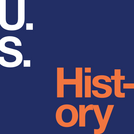
This course will introduce the student to the history of the nations and peoples of the Middle East and Southwest Asia from 1919 to the present. The course covers the major political, economic, and social changes that took place throughout the region during this 100-year period. Upon successful completion of this course, the student will be able to: Identify and explain major political, social and economic trends, events, and people in history of the Middle East and Southwest Asia from the beginning of the 20th century to the present; Explain how the countries of the region have overcome significant social, economic, and political problems as they have grown from weak former colonies into modern nation-states; Identify and explain the emergence of nationalist movements following World War I, European political and economic imperialism during the first half of the 20th century, the creation of the nation of Israel, regional economic development, and the impact of secular and religious trends on Middle Eastern society and culture during the second half of the 20th century; Identify and explain the important economic, political, and social developments in the Middle East and Southwest Asia during the twentieth and twenty-first centuries; Analyze and interpret primary source documents from the 20th and 21st centuries that illustrate important overarching political, economic, and social themes. (History 232)
- Subject:
- Arts and Humanities
- History
- Religious Studies
- World Cultures
- World History
- Material Type:
- Assessment
- Full Course
- Lecture
- Reading
- Syllabus
- Provider:
- The Saylor Foundation
- Date Added:
- 02/20/2019


